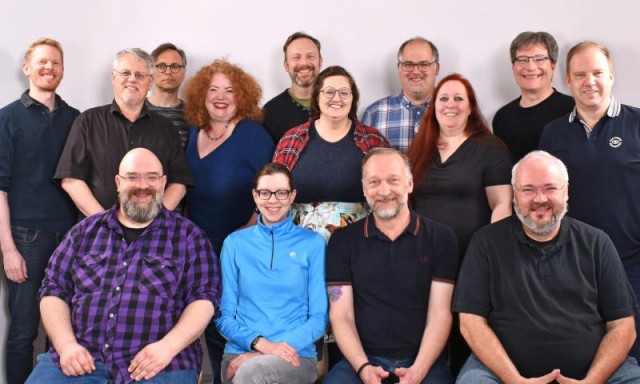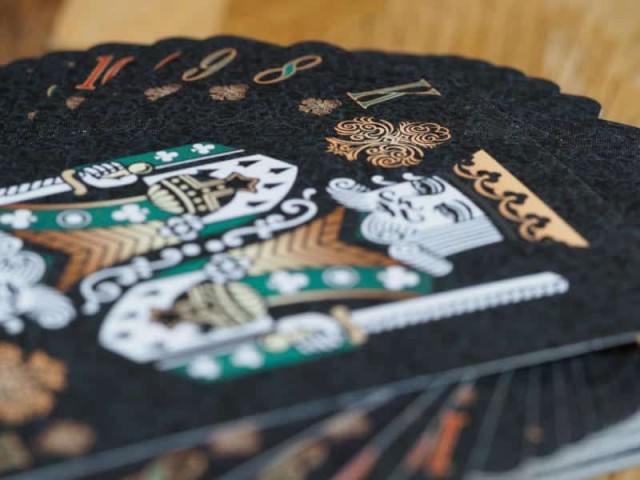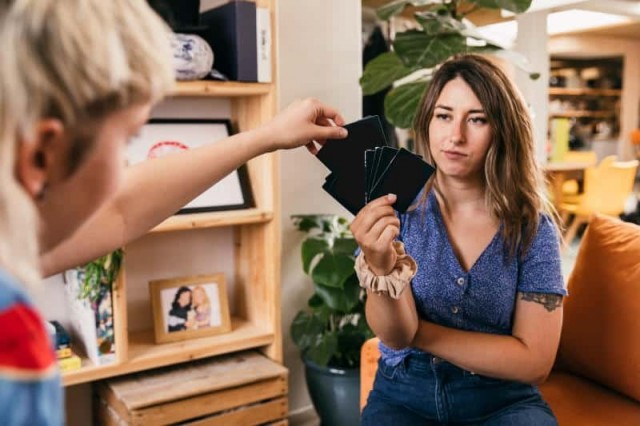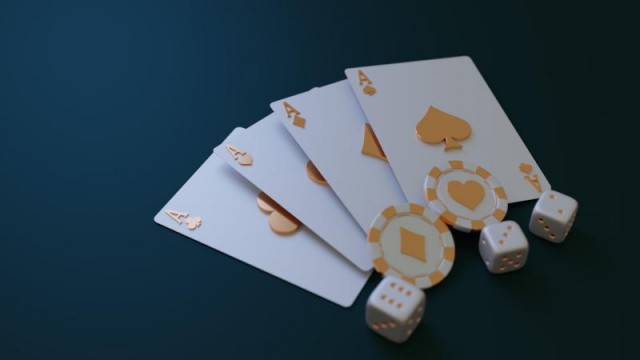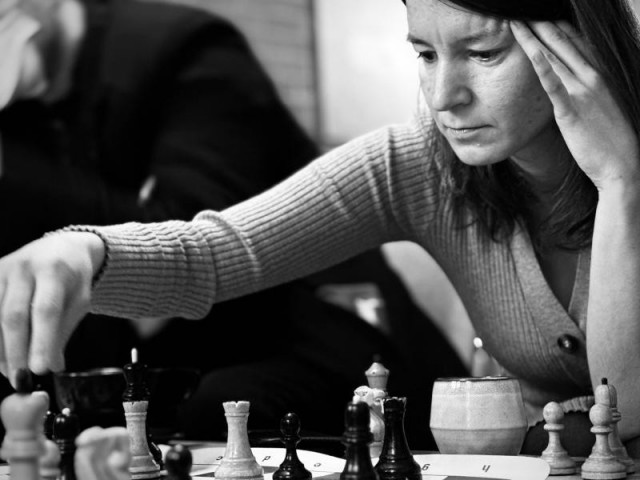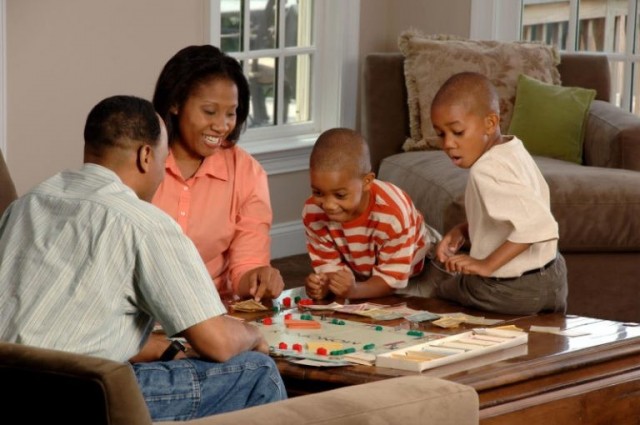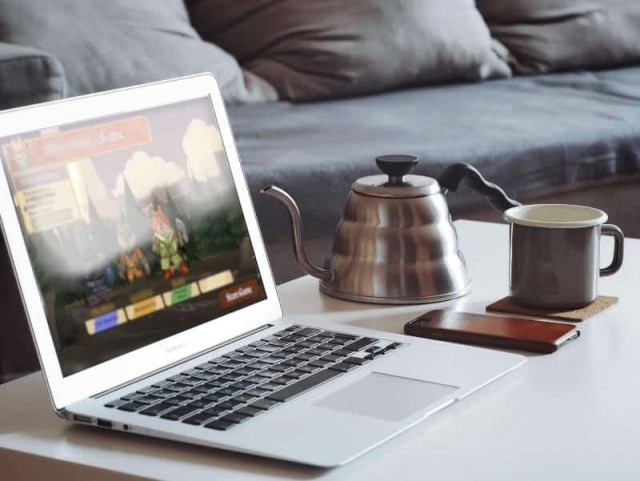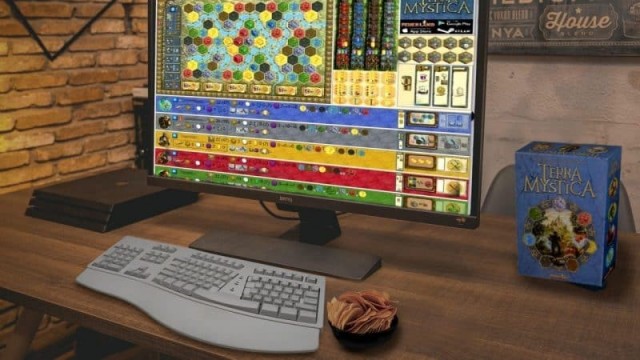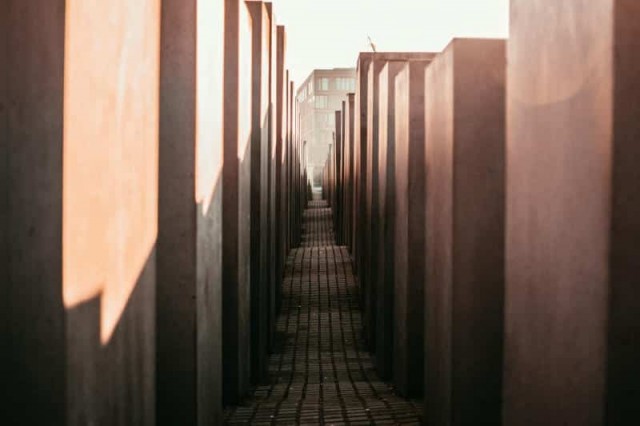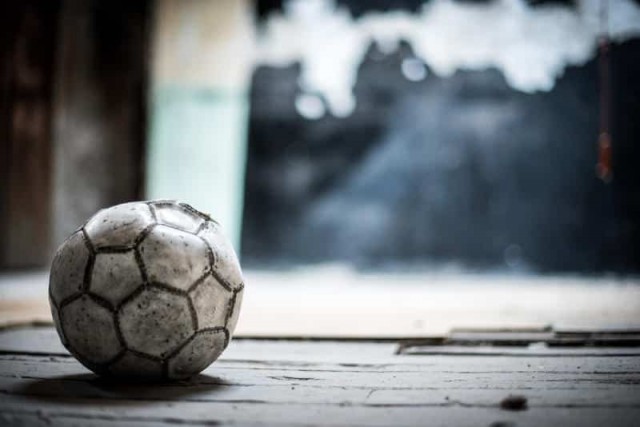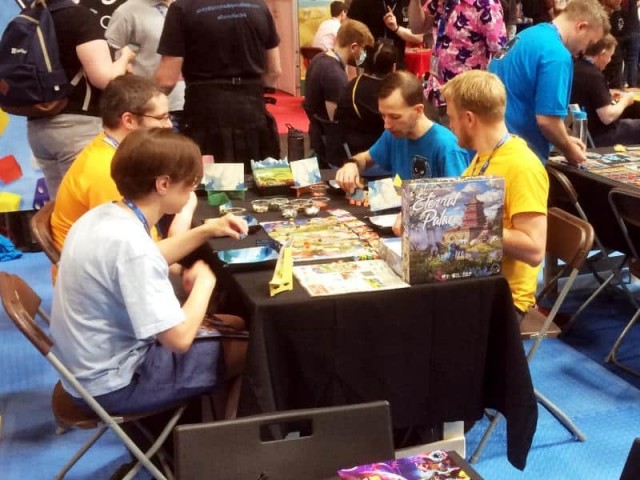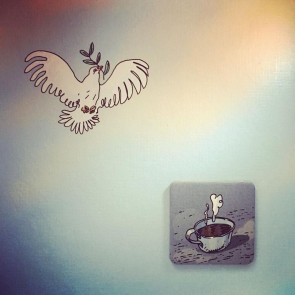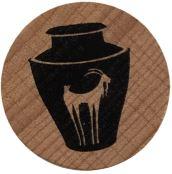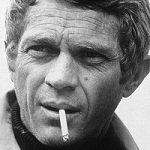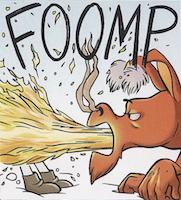I haven't played The Grizzled in awhile, but parts of what it expressed have lingered in my memory: a lot of desperation, a feeling of almost shell-shocked abstraction colliding with evocative trauma effects, the weight of words and their absence, and that so much depends upon a single cup of coffee.
Drifting around these memories is the peculiar quality of the imagery on the cards, how everything was portrayed from the perspective of someone in a trench looking upward at floating symbols in the air.

Even the peace and monument cards (good ending, bad ending) are composed from this same low angle, replacing the rubble of the trenches with barbed wire or wintering trees.
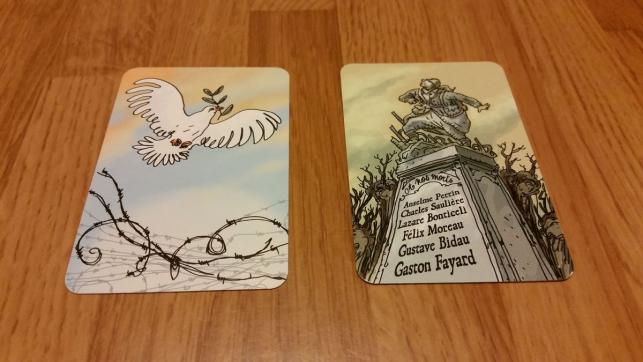
It seems appropriate that these bookend images are the most stable, the conclusions once the waves of attacks, the gas, the shells, and the horror have settled. These contrast with the rest of the images which are perhaps the most "gamified" but also the most visually de-stabilized in the design, where the iconography hangs in the air in a way that is functional but also slightly unnerving and hallucinatory, unmoored, out of perspective. These are abstractions that work as game elements but hint at a scarier, more brutal metonymy that would give these objects a near talismanic quality to the soldier, as elemental as the sharp weather distinctions which are also codified in the game, sometimes even striped across the same card in a compression of time, spanning the same trench.
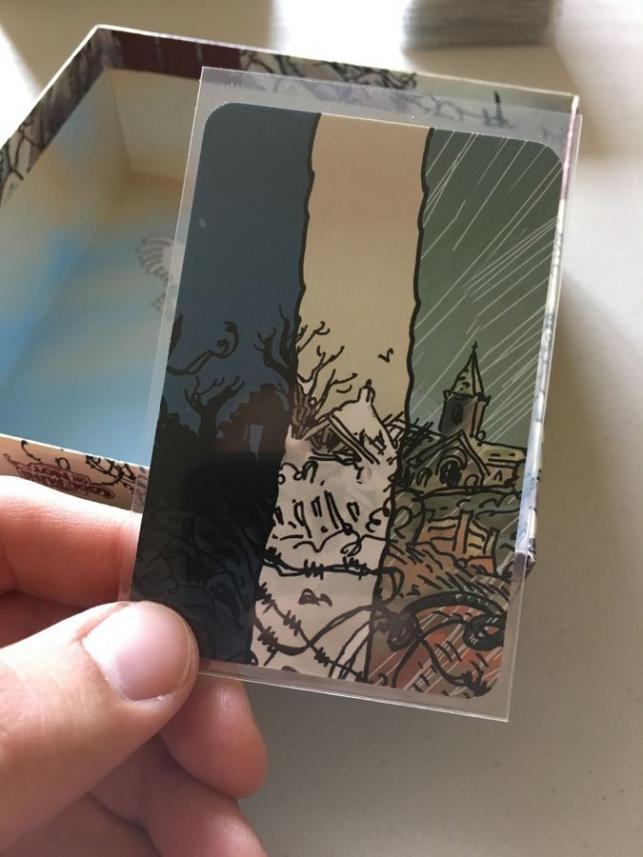
It feels like a fevered mixture of images that are at once stark and readable, but also drift out of reference like a rotoscoped Linklater dream. The Grizzled adds another aspect to this design that makes this drifting and redoubling more potent: the imperative to be silent. Spoken language is taken out of the picture, adding difficulty to an otherwise more trivial (anti-)match-3 puzzle while evoking other intradiegetic silences that are kept in the interests of morale and maybe as an ultimate acceptance of the boundaries of the effable that are often tested in war. But I think the muting of players also leaves room for other things to happen.
As players, we're presented with a reverberating tunnel of signs when we're silently gazing at these images.
Gas mask. This is not a gas mask. It's a gas attack and all of the horror surrounding it, condensed into a sign that would carry meaning for the characters. It's not a gas attack, it's a matchable icon on cards which are played according to rules which can sometimes tell the story of these gas attacks, or just carry the connotation of them, or lend the player to more detached strategic considerations that have nothing to do with the idea of warfare or even a simulation of it. This isn't a representation of World War 1 but a furious shuffling and puzzling of its most vivid emblems in contemporary memory (from history classes or schoolbook poems like "Dulce Et Decorum Est").
Or, impossibly, it's all of these at once.
And it can really only be all of these at once in the context of a board game, particularly one where spoken words are kept at the periphery, defining part of the game's puzzle and part of what it evokes. In doing this, the game invites a comparison to a similar experiment that was analyzed in a very meticulous, playful and punning series of essays by Michel Foucault in 1968 about Rene Magritte's work, This Is Not A Pipe.
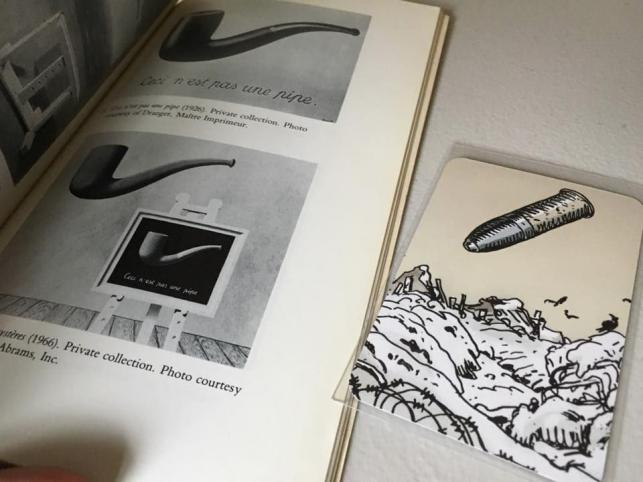
These short essays explored the effects of taking simple representational assumptions underlying words and images and teasing out their often contradictory contracts with one another, with the reader/viewer, and with the represented object. As I re-read these essays, I was struck by how familiar their ideas and conundrums were, and not just because I had read them before. They seemed to be describing gaps and representational ellipses in modeling that we've been bridging, often quite comfortably, in board games for a long time now.
The most famous split that Foucault described through Magritte's work was the difference between the concepts of resemblance and similitude, something he had explored in his prior work The Order of Things.
To me it appears that Magritte dissociated similitude from resemblance and brought the former into play against the latter. Resemblance has a "model," an original element that orders and hierarchizes the increasingly less faithful copies that can be struck from it. Resemblance presupposes a primary reference that prescribes and classes. The similar develops in series that have neither beginning nor end, that can be followed in one direction as easily as in another, that obey no hierarchy, but propagate themselves from small differences among small differences. Resemblance serves representation, which rules over it; similitude serves repetition, which ranges across it. Resemblance predicates itself upon a model it must return to and reveal; similitude circulates the simulacrum as an indefinite and reversible relation of the similar to the similar.
This is a split that I notice in board games, but find all the more interesting because there isn't as much of a struggle between them or a need to bring one into play "against" the other. Similitude often plays with resemblance in board games. One is only given authority over another in more specific game subsets (abstracts for the former, simulation games for the latter).
We can revel in the "analogness" of an analog game, all of the tangible bits, objects and definite rules that perform it, or we can enhance that reveling by occasionally anchoring the analogy in some of the events being portrayed, perhaps even by accident or emergence. But we don't feel the need to inhabit these events with constant fidelity. I think this is part of what distinguishes a board game from other collaborative representations (e.g. RPGs, theater, dance). Our appreciation and enjoyment can phase in and out of resemblance and occupy different registers of gaming (& similitude) simultaneously. The theme isn't necessarily the ground of a game, even in a more "thematic" genre. It circulates in and out of different pieces of the design and often doesn't seem to matter as much as the game's gestures toward it and our playful awareness of how we're enacting them.
But we often get the sense that we are, in fact, playing a game "about" something, both in the sense of concerning and one of proximity, which is valued as a shared experience.
So why is this important? Why do these fussy academic distinctions and their vicissitudes matter if something like a board game can usually bridge them? Because, in terms of representation & meaning, I think this reconciliation is actually unique and special to the hobby and opens up new ways of bringing our thought and its playfulness to bear upon lived experience. It restores something that I think Foucault lost from Magritte's less academic yet more poetic discourse about his understanding of the two concepts of resemblance and similitude.
It seems to me that, for example, green peas have between them relations of similitude, at once visible (their color, form, size) and invisible (their nature, taste, weight). It is the same for the false and the real, etc. Things do not have resemblances, they do or do not have similitudes.
Only thought resembles. It resembles by being what it sees, hears, or knows; it becomes what the world offers it.
Foucault references this fan letter from Magritte in his essays and the full contents of the letter are appended at the end of most publications of This Is Not A Pipe, but the philosopher only picks up select ideas from Magritte's insight and sadly leaves this one on the cutting room floor. Only thought resembles. It becomes what the world offers it.
I think that board games can demonstrate a unique mode of expression and play, where the meaning or significance of a subject can be obliquely arrived at and built upon outside of imperatives to simulate or even narrate that subject. They're a strange, liminal act of modeling that can bring about experiences valued on their own terms and in distinction from what they are trying to model, even going so far as to carry the thing being modeled into a new place or a new understanding.
What makes The Grizzled all the more unique is that it brings these playful refractions to bear on a subject that doesn't seem quite as amenable to facile philosophical puns. This is war we're (not) talking about. It carries a debt. But perhaps as we pass the one hundredth year since the armistice, it's time to start exploring what seems to be the opposite side of the spectrum that games like Advanced Squad Leader have occupied, where resemblance and simulation is the assumed ground of the design. Wars signify in other registers than historically archived combat maneuvers; our thought can become/resemble them in different ways and not necessarily lose gravitas, but rather carry it into new contexts and a more personal, human understanding.
That of which we cannot speak can in fact be passed over in something other than silence. Games offer us another path.
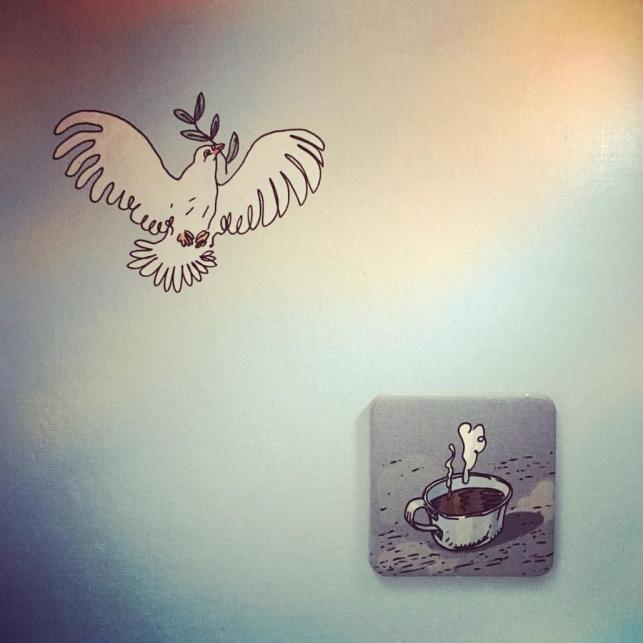
 Games
Games How to resolve AdBlock issue?
How to resolve AdBlock issue? 